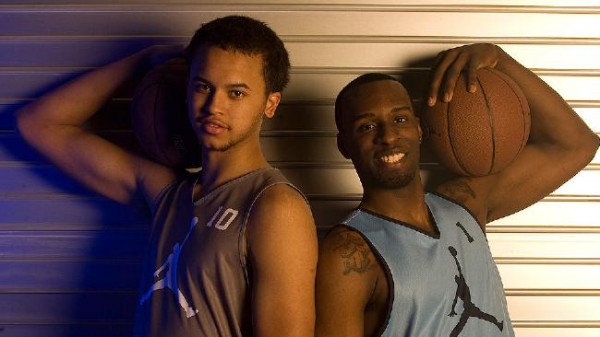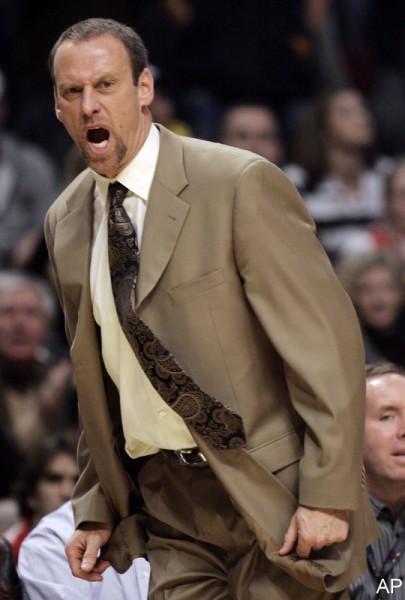UCLA Week Wrap-Up
Posted by AMurawa on September 4th, 2012In case you missed anything, here are links to all of our posts from UCLA week:

In case you missed anything, here are links to all of our posts from UCLA week:
Chris Johnson is an RTC columnist. He can be reached @ChrisDJohnsonn.
Situated only 12 miles apart, an angst-inducing, traffic-clogged car ride away from one another, USC and UCLA have for many years sustained an adversarial existence on the athletic playing fields. The Trojans have dominated their cross-town rivals on the gridiron of late, while the Bruins have lorded over their cardinal-and-gold clad foes on the basketball court. The rivalry is alive and well, and both teams continue to make strides hoping to find ways to outperform one another in the revenue-producing sports. It starts with recruiting, the elemental building block to any successful program. Coaches at top programs like UCLA and USC must be able to seek out and sway the nation’s best high school players to their respective institutions. The meteoric rise of recruiting, propelled by expansive coverage from general scouting sites like Rivals, Scout, 247sports and ESPN Recruiting Nation, has pushed the art of courtship into the national spotlight, and coaches/programs are now judged on their ability not only to win games and draw fans but to also attract the best prospects in the country. The two LA schools have long stood as premium destinations for top-tier high school talents, but in today’s financially-intertwined recruiting market, these programs’ reputations, coaches, facilities and prime location – who doesn’t enjoy the comfort of a sunbath on the way to practice nearly every day of the year? – don’t hold the alluring force they once did. Often times persuading the cream of the high school crop requires more than what NCAA legislation allows.

The subject of an NCAA investigation, Anderson and Muhammad might not see the court in 2012-13 (Photo credit: Albert Dickson/SportingNews)
So even when an historic program like UCLA reels in the nation’s No. 1 recruiting class – as it did in 2012, built on the backs of four commitments and featuring the nation’s No. 1 overall prospect, Shabazz Muhammad – at least some measure of suspicion is warranted. Athletic director Dan Guerrero revealed on Monday that the NCAA has shifted its analytical eye toward that prized recruiting haul. In a statement released by the school, Guerrero confirmed that two members of the Bruins’ incoming class have yet to receive eligibility clearance for the upcoming season. A recent report by Scout’s BruinReportOnline.com indicated three players (Muhammad, Kyle Anderson and Tony Parker) are in danger of losing their eligibility, but ESPN Los Angeles, citing an unnamed source, reported the ongoing probe concerns potential recruiting violations on behalf of Anderson and Muhammad. Parker, according to the same source, has been cleared to play this season. Muhammad’s recruitment has been subjected to NCAA scrutiny over the past several months, with particular concern over his relationship with financial advisers Ken Kavanagh and Benjamin Lincoln and his method of payment for several unofficial visits. Muhammad was held out of UCLA’s recent foreign exhibition tour to China, but Anderson and Parker both attended with the team (though Parker did not play due to injury).
We’ve reached the end of our look at Utah basketball (for now), but in case you missed anything, it is all right here:
“It was the best of times, it was the worst of times.” So Charles Dickens began A Tale of Two Cities and a long series of lazy writers lining up to steal that quote. Never one to shy away from a good theft every now and then, I’ll, um, “borrow” Dickens’ line to sum up the current state of the Utah basketball program. The second half of that line clearly applies to Utah at present as it comes off of its worst season in more than 100 years of basketball, but at the same time, with the Utes now members of the Pac-12 and all the boatloads of television money and exposure that comes along with it, Utah basketball is in completely uncharted waters. In a good way. Never before has the basketball team been this bad and never before has it been this profitable. Gotta love capitalism. So, when we go to sum up the state of the Utah basketball program, we’ve got to at least pay heed to the fact that while, yes, wins and losses are really the bottom line for sports fans, there are administrators in Salt Lake City who think last year, regardless of a 6-25 record, was one great accomplishment for the Utes regardless of the fact that the basketball program didn’t do any of the heavy lifting.
The Utah basketball program really is in a situation where there is a little bit of good to go with everything bad happening. Sure, it is probably more a credit to the football program’s recent success that Utah was invited to join the Pac-12 (after all, football is all that matters, right?), but as the saying goes, a rising tide lifts all boats, and good god, is that Utah athletic department about to be buoyed by a river of money with plenty sure to trickle down through the basketball program. Sure, the Huntsman Center, which was once a fearsome homecourt advantage, is now a 40-something-year-old venue which was regularly half-empty and whisper-quiet last year. But hey, at least this year fans across the nation – and perhaps more importantly recruits across the nation – will get to see any game the Utes play (assuming the Pac-12 Network distribution plans come to fruition at some future point). Sure, in basketball-mad Utah, the Utes are arguably running third in terms of momentum, behind BYU (UU has lost six in a row to BYU by an average of more than 17 points) and Utah State, but, um, insert the image of a fat cat in a suit and tie greedily rubbing his fingers and thumb together in anticipation of a large windfall here. Or to steal another cliché, “show me the money!”
Each week we’re trying to get to the heart of one Pac-12 program by asking the most important question that faces that program. This week, we’ve been profiling a Utah program that is trying to bounce back from an awful season, and along with myself and Connor Pelton, we’ve asked Adam Butler of Pachoops the following burning question:
Over the course of more than 100 years of basketball history, Utah has had one of the most consistently successful programs in college basketball. But, in the last decade, a couple of misses in hiring a head coach have left the Utes scrambling, resulting in last year’s debacle, the worst season in the history of the program. Is Larry Krystkowiak the right guy to return the Utes to their winning ways? And how quickly can he reasonably be expected to turn things around?

After Hitting The Bottom Of The Barrel, Can Head Coach Larry Krystkowiak Lead Utah Back To Relevance?
Adam Butler: The Utes have fallen on some strange times and I have to say I don’t quite know what to make of Larry K. He’s like the Lane Kiffin of college basketball less the arrogance and drama (and I’m not entirely sure where he stands on the wife situation). But let me explain the Kiffin thing. K has bounced around for short stints of moderate success. His while with the Bucks was not glamorous and swift but was an opportunity awarded to a guy with two seasons of college head coaching at Montana where he was 42-20. So I feel like there isn’t a body of work by which to say, “Yes, Larry is the man to get Utah to the fat-guy-in-sweater days.” But he’s intense, he’s young, and he has only one place to go: up. I mean, they held tryouts last season. I like the pieces he’s bringing in and have heard only rave reviews of Jordan Loveridge and that’s where it begins; some recruiting success, diamonds in the rough, and then momentum rolls. Can K do it? Sure, why not, because anything is better than a six-win season.
This ol’ crystal ball of mine may be on the fritz, but we’ve got to put it through its paces one last time as we check on the immediate future for the Utah basketball program. After a week or running down the comings and goings over the offseason, we’re ready to guarantee improvement for the Utes – not necessarily going out on a huge limb for a team that won just six times last year. But, for more specifics on how it will all go down, read on.
Utah’s Leading Scorer – Glen Dean. There is enough evenly spaced talent on this Utah roster that predicting some balanced scoring atop the statistics is the easiest bet, with guys like Aaron Dotson, Jarred DuBois, Jordan Loveridge and perhaps leading returning scorer Jason Washburn all in the mix for double-figure scoring averages. But Dean will likely have the ball in his hands quite a bit and he’s got a history of using possessions and taking shots, something that Dotson and Washburn, for example, do not. And Dean has proven himself capable of not only creating offensive opportunities for others, but also for himself. He’s an efficient scorer who can connect from deep or get into the lane and score and he should be expected to average somewhere near the 12 or 13 points he averaged in his time at Eastern Washington. On this Utah team, those 12 or 13 points may be enough to narrowly edge out two or three other teammates for the leading scorer title.
Utah’s MVP – Jordan Loveridge. On Utah’s recent Brazil trip, not only was Loveridge the Utes’ leading scorer over the course of the four games, there has been talk that he was the team’s best player. A true combo forward capable of rebounding with the big boys and scoring in the lane or stepping outside and converting deep jumpers, Loveridge will help give the Utes an athleticism, coupled with an ability to create offensive opportunities from the frontcourt, that was largely missing from last year’s squad.